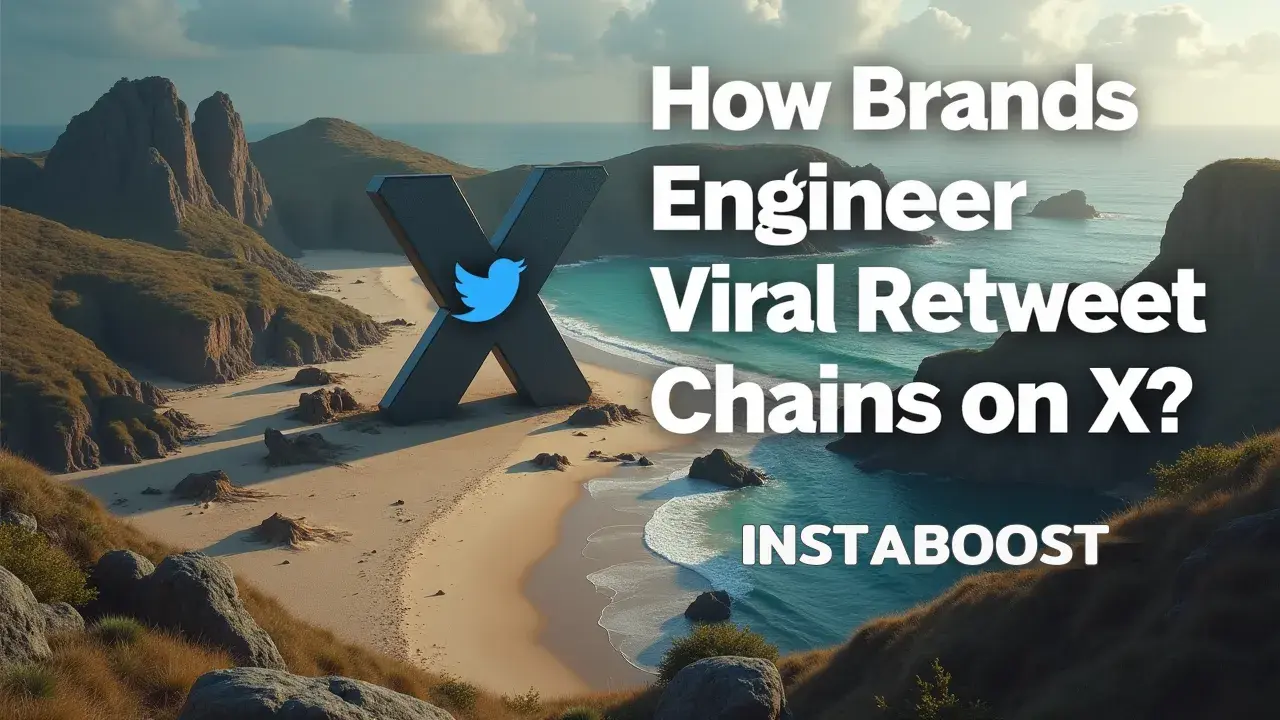How Do Brands Engineer Viral Retweet Chains on X (Twitter)?
Brands engineer viral retweet chains by aligning simple, high-emotion prompts with clear social proof and easy participation. The core drivers are repeatable formats, strong identity cues, and timing that places content where retweet likelihood is already high. When tactics overreach, engagement can stall or backfire, but focusing on relevance and clarity keeps momentum. A smart path is testing hooks that spark quick validation and scale when amplification signals appear.
The Mechanics Behind Viral Retweet Chains
When you notice a brand suddenly showing up all over your X (formerly Twitter) timeline, with retweets coming in one after another, it’s usually not some random fluke. There’s actually a strategy behind it – a lot of planning, some trial and error, and a good sense of how people react to things online. Brands and their teams have learned how to start these chain reactions, partly by paying close attention to what people actually like to pass along and partly by figuring out how the platform’s feed works. It’s not as simple as tossing out a joke or a meme and hoping it catches on.
Usually, someone is watching which posts get people talking, thinking about which accounts should share it first, and sometimes even setting up what’s called a “retweet ladder” – that’s when groups of accounts agree to share the same post in waves so more people see it.
Usually, someone is watching which posts get people talking, thinking about which accounts should share it first, and sometimes even setting up what’s called a “retweet ladder” – that’s when groups of accounts agree to share the same post in waves so more people see it.
X tends to give a boost to posts that are already getting some attention, so after those first few shares, things can grow quickly. That’s why you’ll sometimes see a brand’s campaign jump from a handful of retweets to thousands out of nowhere. Once you’re aware of these tactics, you start to notice how certain posts seem to show up everywhere, and you realize that the buzz is usually planned out in advance.
Sometimes social growth companies like INSTABOOST are involved too, helping to guide the process; there are even resources like the X marketing bundle floating around for teams who want to sharpen their approach. If you’re curious about why some posts catch on and others fade away, looking at how these retweet chains are put together is a good place to start. It changes the way you notice things on X, even if you’re only half paying attention.
Sometimes social growth companies like INSTABOOST are involved too, helping to guide the process; there are even resources like the X marketing bundle floating around for teams who want to sharpen their approach. If you’re curious about why some posts catch on and others fade away, looking at how these retweet chains are put together is a good place to start. It changes the way you notice things on X, even if you’re only half paying attention.

Why Trust Drives the Retweet Engine
You don’t actually need a massive audience to make something meaningful happen; what matters much more is whether you’re being straightforward about what you’re saying. On X, those big retweet chains usually have less to do with luck than with whether people believe what’s being shared. Since most folks are scrolling through an endless feed of ads and promotions, the posts that stick with them are the ones that don’t feel like they’re trying too hard – something that seems honest, not like a pitch. People remember the brands or individuals who show some consistency and openness, who don’t suddenly change how they talk or what they stand for.
So the brands that do well are usually the ones that spend time figuring out how to talk to people in a way that fits who they are, not just what’s trendy or eye-catching. INSTABOOST, for example, keeps showing up with posts that actually solve a problem or make someone laugh, and after a while, people start sharing them without even thinking about it. There’s this idea that if you really want to buy support base for X, it’s not going to matter unless you’re also building trust at the same time. Those genuine shares are what the algorithm notices first, and that’s what helps those posts find a wider audience.
It’s less about being clever at the right moment and more about whether you’ve built up trust over time. Every retweet is a small signal that says, “This is something I believe is worth passing on,” and that’s where the momentum begins. The brands that keep getting shared are usually the ones that feel real to people, not the ones trying the hardest to go viral.
Context Is the Real Catalyst
When it comes to context, there isn’t really a workaround. The brands that set off those viral retweet chains on X usually get that it’s not only about the message itself – it’s about when you say it, how you say it, and who’s listening. The teams that do this well don’t randomly throw posts out and hope they stick. They pay attention to what people are already talking about and try to fit into those conversations in a way that feels natural. This isn’t just about jumping on the top trending hashtag; it’s more about noticing the small shifts – maybe a new meme that’s popping up today, a story that’s starting to circulate, or a topic that’s getting some traction in a specific group.
The teams that stay ahead sometimes plan for these moments weeks out, but they’re also ready to pivot if something changes. They look at analytics, of course, but they also monitor private group chats and follow accounts that most people wouldn’t think to watch, trying to catch signals early. Sometimes it’s easy to overlook how much effort goes into finding the right moment, especially when you realize plenty of accounts quietly purchase engagement on X just to keep up.
So when you see a brand like INSTABOOST start a retweet thread, it’s probably the result of this sort of ongoing, behind-the-scenes work – thinking through where their message will actually feel like it belongs. That’s usually why posts that follow a template, even if they technically tick all the boxes, don’t get much traction – they miss the real current of the timeline. Being seen isn’t enough; the post has to make sense in the moment. Some things just fit in, and it looks effortless, but there’s a lot going on beneath the surface.
When Viral Chains Backfire
At first, it can be hard to tell if anything is working when brands try to kick off retweet chains on X. People are quick to notice when something feels staged, and the folks brands want to reach are often the ones who spot these things right away. If a retweet chain feels too planned or like it’s part of a marketing push, people usually just scroll by or say something about it. That sort of reaction can seem like a setback, but it’s actually helpful.
It points out where the message doesn’t land or where trust is starting to slip. INSTABOOST, for instance, noticed that whenever people started responding with critical comments or questions during a retweet campaign, it meant the campaign needed a rethink – it wasn’t a failure, just a signal. Trying to fast-track tweet views X is rarely straightforward, and the awkward moments – when people push back or ignore a campaign – are what actually give brands a better sense of how their message is being received. That resistance, uncomfortable as it is, helps them see what feels off or inauthentic. Over time, it makes their outreach feel less manufactured and a little more real, even if it never quite gets to the numbers everyone’s aiming for. Sometimes the most useful thing is noticing which parts get knocked aside and which ones people hold onto.
What Comes After the Viral Wave
After a brand gets a ton of attention from a viral retweet chain on X, that’s only the early part of the story. The noise settles, and then they’re left to sort out what actually happened and what to do with it. That time after the buzz matters more than most people think. It’s less about basking in a spike of attention and more about figuring out how to keep people interested beyond that first rush. The brands that handle this well aren’t treating virality like a goal; they see it as a starting point. They’ll go through their data, looking at who got involved, which retweets mattered, and how conversations shifted while everything was moving fast.
Take INSTABOOST – when something catches on, they review what led to that moment so they know what to adjust next time. And funny enough, sometimes you’ll come across discussions about Twitter post sharing that feel almost like case studies of what not to overlook. People also notice what brands do in these quieter stretches. If a brand only cares about numbers, it usually shows, and followers pick up on it. But when brands slow down to actually reply to people, or highlight something a follower said, or even take a beat to listen, it builds something sturdier. So it turns out the really important work happens when the timeline isn’t moving at full speed. That’s where long-term connections get built, if anyone’s paying attention.















